Opinion & Analysis
Finding the right wedge shaft for your game
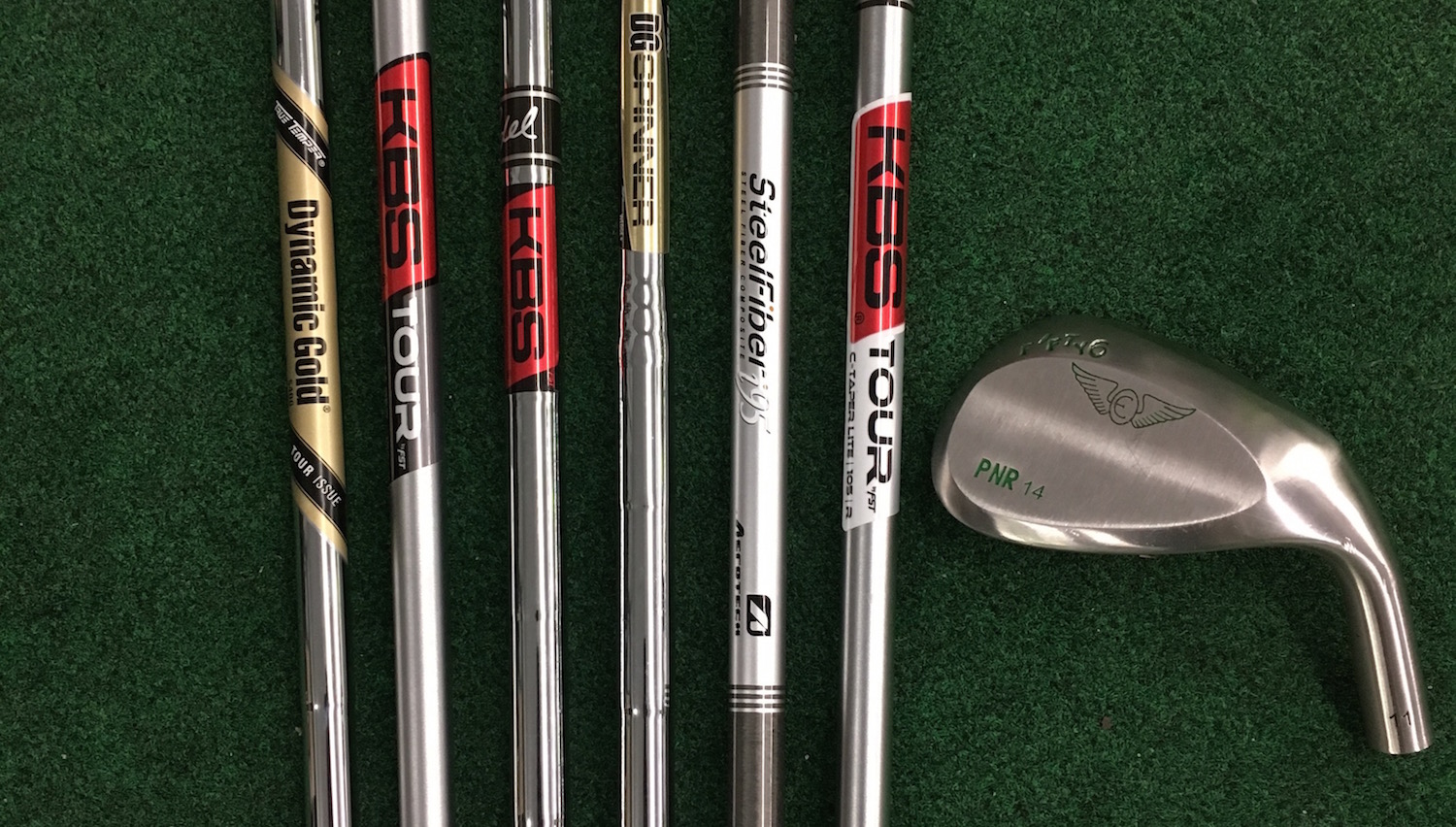
In the minds of many golfers, wedges are the most important clubs in the bag. As a fitter, I am always surprised how this belief conflicts with the amount of consideration golfers typically put into selecting their wedges. When asked why certain wedges are in their bag, most reply with something along the lines of, “Well, I’ve always just used this loft and grind,” “I’m not really sure” or “My buddy, who’s a scratch golfer, told me I need it.” For most, wedges are in an unfortunate race with the putter to win the unceremonious award of the clubs that help golfers the least.
Most people know there are wedges with multiple loft and bounce options available, even if they’re not quite sure what’s best for them. Very few, however, have ever thought about the shafts in their wedges. In this article, I’ll be showing you the importance of finding the proper shaft for the wedges in your bag by illustrating how different shafts can impact performance.
The goal of this test is not to make some generic recommendation that “you should be playing XXX shaft,” but rather to highlight the variance that can exist across different shafts. I encourage you to do your own testing with a qualified fitter, but if one is unavailable in your area, these themes might help find a good wedge shaft for you.
Testing Process
To conduct these tests, I selected three testers with low single-digit handicaps and relatively consistent swings. Any findings will only be amplified for higher-handicap golfers due to increased swing variability, and any shaft-to-shaft variations might have been hidden by this inconsistency.
We used an Edel Wedge fitting system because of the interchangeable hosel system and extensive shaft options. Each tester selected a 56-degree head with the bounce that fit them best. They then used the same wedge head on each of the six shafts we tested. The order the shafts was randomized for each golfer during the testing process.
The shafts represented some common wedge shafts and crossed multiple weights, flexes and EI profiles. Testers hit five shots at a target 100 yards away with each shaft, and all shots were measured with FlightScope.
The Data
Data: To start, I’m posting a table that shows summary results for each shaft per golfer (below). A couple of things to remember when reading this:
- All distances are in yards.
- All distances are carry distances.
- On lateral distances: negative numbers represent left of target, positive numbers right of target.
- Standard deviation shows the variance in the range with smaller numbers being better.
Full Testing Results
A lot to digest, right?
To help gauge shaft performance for each golfer, I created an additional table showing the ranges in carry distance and lateral dispersion. These numbers were then multiplied to calculate the total area covered by the five shots with each shaft. This is the single best summary stat I can think of to grade wedge performance.
Simplified Testing Results
Now we can start to see some things.
- Based on the average size of the dispersion area, Wes is the best wedge player. Sorry Mike and Nick, but I’m pretty sure you already knew this…
- Distance control is where variation really shows up, and this is where the best wedge players differentiate themselves. Of the 18 player/shaft combinations we tested, there were only two where the carry distance range was less than the lateral range.
- Each player did have a specific shaft that stood out, one with a dispersion area much smaller than the other options. There just wasn’t any consistency in shaft performance across the golfers.
Best and Worst Shafts for Each Tester
Launch Angle and Spin Rate Rankings
The same variation is found when looking at launch angle and spin rates, with the shafts that produced the highest and lowest launch and spin numbers varying for each golfer. These tables are simple stack rankings, based on performance.
- One interesting correlation was that for two of the three golfers, the same shaft provided the smallest dispersion area and lowest launch angle. While not a hard and fast rule, it’s something to keep in mind when trying out wedge shafts.
- The shafts that worked better for the testers weren’t necessarily the ones you would have guessed. The KBS C-Taper Lite 105R worked the best for Nick, who has an upright and aggressive swing. Wes has a flat, smooth swing and the relatively stiff and heavy True Temper DG Spinner Wedge+ shaft worked the best for him.
Two Big Takeaways
- Lighter and More Flexible is Probably Better. When selecting new or re-shafting your existing wedges, your best bet is to find a fitter with the proper experience and equipment to guide you through the options. If that’s not possible, a general trend shown here is that a shaft that’s lighter and a bit more flexible than what you’re using in your irons is a good bet.
- Enough about the Spin. Worrying about what wedge shaft creates the most spin should not be your top concern. Even though there was shaft-to-shaft variation in the spin produced, they all had enough to quickly stop the ball on the green. As good as these Edel wedges are, this is a consistent finding regardless of the brand we’re fitting. Finding the proper wedge head (loft, grind, bounce) and a shaft that helps your distance control should be your main focus when getting new wedges, not if one option gives you an extra hundred or two RPMs.
In our next article, we’ll talk more about selecting bounce and give you some tips on how to fit yourself if you can’t find a fitter with a proper wedge fitting system.
- LIKE427
- LEGIT58
- WOW25
- LOL5
- IDHT6
- FLOP12
- OB3
- SHANK35
Opinion & Analysis
The Wedge Guy: What really makes a wedge work? Part 1

Of all the clubs in our bags, wedges are almost always the simplest in construction and, therefore, the easiest to analyze what might make one work differently from another if you know what to look for.
Wedges are a lot less mysterious than drivers, of course, as the major brands are working with a lot of “pixie dust” inside these modern marvels. That’s carrying over more to irons now, with so many new models featuring internal multi-material technologies, and almost all of them having a “badge” or insert in the back to allow more complex graphics while hiding the actual distribution of mass.
But when it comes to wedges, most on the market today are still single pieces of molded steel, either cast or forged into that shape. So, if you look closely at where the mass is distributed, it’s pretty clear how that wedge is going to perform.
To start, because of their wider soles, the majority of the mass of almost any wedge is along the bottom third of the clubhead. So, the best wedge shots are always those hit between the 2nd and 5th grooves so that more mass is directly behind that impact. Elite tour professionals practice incessantly to learn to do that consistently, wearing out a spot about the size of a penny right there. If impact moves higher than that, the face is dramatically thinner, so smash factor is compromised significantly, which reduces the overall distance the ball will fly.
Every one of us, tour players included, knows that maddening shot that we feel a bit high on the face and it doesn’t go anywhere, it’s not your fault.
If your wedges show a wear pattern the size of a silver dollar, and centered above the 3rd or 4th groove, you are not getting anywhere near the same performance from shot to shot. Robot testing proves impact even two to three grooves higher in the face can cause distance loss of up to 35 to 55 feet with modern ‘tour design’ wedges.
In addition, as impact moves above the center of mass, the golf club principle of gear effect causes the ball to fly higher with less spin. Think of modern drivers for a minute. The “holy grail” of driving is high launch and low spin, and the driver engineers are pulling out all stops to get the mass as low in the clubhead as possible to optimize this combination.
Where is all the mass in your wedges? Low. So, disregarding the higher lofts, wedges “want” to launch the ball high with low spin – exactly the opposite of what good wedge play requires penetrating ball flight with high spin.
While almost all major brand wedges have begun putting a tiny bit more thickness in the top portion of the clubhead, conventional and modern ‘tour design’ wedges perform pretty much like they always have. Elite players learn to hit those crisp, spinny penetrating wedge shots by spending lots of practice time learning to consistently make contact low in the face.
So, what about grooves and face texture?
Grooves on any club can only do so much, and no one has any material advantage here. The USGA tightly defines what we manufacturers can do with grooves and face texture, and modern manufacturing techniques allow all of us to push those limits ever closer. And we all do. End of story.
Then there’s the topic of bounce and grinds, the most complex and confusing part of the wedge formula. Many top brands offer a complex array of sole configurations, all of them admittedly specialized to a particular kind of lie or turf conditions, and/or a particular divot pattern.
But if you don’t play the same turf all the time, and make the same size divot on every swing, how would you ever figure this out?
The only way is to take any wedge you are considering and play it a few rounds, hitting all the shots you face and observing the results. There’s simply no other way.
So, hopefully this will inspire a lively conversation in our comments section, and I’ll chime in to answer any questions you might have.
And next week, I’ll dive into the rest of the wedge formula. Yes, shafts, grips and specifications are essential, too.
- LIKE19
- LEGIT6
- WOW1
- LOL1
- IDHT2
- FLOP2
- OB1
- SHANK1
Golf's Perfect Imperfections
Golf’s Perfect Imperfections: Amazing Session with Performance Coach Savannah Meyer-Clement

In this week’s episode, we spent some time with performance coach Savannah Meyer-Clement who provides many useful insights that you’ll be able to implement on the golf course.
- LIKE0
- LEGIT0
- WOW0
- LOL0
- IDHT0
- FLOP0
- OB0
- SHANK0
19th Hole
Vincenzi’s 2024 RBC Heritage betting preview: Patrick Cantlay ready to get back inside winner’s circle

Just a two-hour drive from Augusta National, the PGA TOUR heads to Harbour Town Golf Links in Hilton Head Island, S.C. Hilton Head Island is a golfer’s paradise and Harbour Town is one of the most beautiful and scenic courses on the PGA TOUR.
Harbour Town Golf Links is a par-71 that measures 7,121 yards and features Bermuda grass greens. A Pete Dye design, the course is heavily tree lined and features small greens and many dog legs, protecting it from “bomb-and-gauge” type golfers.
The field is loaded this week with 69 golfers with no cut. Last year was quite possibly the best field in RBC Heritage history and the event this week is yet another designated event, meaning there is a $20 million prize pool.
Most of the big names on the PGA Tour will be in attendance this week with the exceptions of Hideki Matsuyama and Viktor Hovland. Additionally, Webb Simpson, Shane Lowry, Gary Woodland and Kevin Kisner have been granted sponsors exemptions.
Past Winners at Harbour Town
- 2023: Matt Fitzpatrick (-17)
- 2022: Jordan Spieth (-13)
- 2021: Stewart Cink (-19)
- 2020: Webb Simpson (-22)
- 2019: CT Pan (-12)
- 2018: Sotoshi Kodaira (-12)
- 2017: Wesley Bryan (-13)
- 2016: Branden Grace (-9)
- 2015: Jim Furyk (-18)
In this article and going forward, I’ll be using the Rabbit Hole by Betsperts Golf data engine to develop my custom model. If you want to build your own model or check out all of the detailed stats, you can sign up using promo code: MATTVIN for 25% off any subscription package (yearly is best value).
Key Stats For Harbour Town
Let’s take a look at key metrics for Harbour Town Golf Links to determine which golfers boast top marks in each category over their past 24 rounds.
Strokes Gained: Approach
Strokes Gained: Approach is exceedingly important this week. The greens at Harbour Town are about half the size of PGA TOUR average and feature the second-smallest greens on the tour. Typical of a Pete Dye design, golfers will pay the price for missed greens.
Total SG: Approach Over Past 24 Rounds
- Scottie Scheffler (+1.27)
- Tom Hoge (+1.27)
- Corey Conners (+1.16)
- Austin Eckroat (+0.95)
- Cameron Young (+0.93)
Good Drive %
The fairways at Harbour Town are tree lined and feature many dog legs. Bombers tend to struggle at the course because it forces layups and doesn’t allow long drivers to overpower it. Accuracy is far more important than power.
Good Drive % Over Past 24 Rounds
- Brice Garnett (88.8%)
- Shane Lowry (+87.2%)
- Akshay Bhatia (+86.0%)
- Si Woo Kim (+85.8%)
- Sepp Straka (+85.1%)
Strokes Gained: Total at Pete Dye Designs
Pete Dye specialists tend to play very well at Harbour Town. Si Woo Kim, Matt Kuchar, Jim Furyk and Webb Simpson are all Pete Dye specialists who have had great success here. It is likely we see some more specialists near the top of the leaderboard this week.
SG: TOT Pete Dye per round over past 36 rounds:
- Xander Schauffele (+2.27)
- Scottie Scheffler (+2.24)
- Ludvig Aberg (+2.11)
- Brian Harman (+1.89)
- Sungjae Im (+1.58)
4. Strokes Gained: Short Game (Bermuda)
Strokes Gained: Short Game factors in both around the green and putting. With many green-side bunkers and tricky green complexes, both statistics will be important. Past winners — such as Jim Furyk, Wes Bryan and Webb Simpson — highlight how crucial the short game skill set is around Harbour Town.
SG: SG Over Past 24 Rounds
- Jordan Spieth (+1.11)
- Taylor Moore (+1.02)
- Wyndham Clark (+0.98)
- Mackenzie Hughes (+0.86)
- Andrew Putnam (+0.83)
5. Greens in Regulation %
The recipe for success at Harbour Town Golf Links is hitting fairways and greens. Missing either will prove to be consequential — golfers must be in total control of the ball to win.
Greens in Regulation % over past 24 rounds:
- Brice Garnett (+75.0%)
- Scottie Scheffler (+69.9%)
- Corey Conners (+69.0%)
- Shane Lowry (+68.3%)
- Patrick Rodgers (+67.6%)
6. Course History
Harbour Town is a course where players who have strong past results at the course always tend to pop up.
Course History over past 24 rounds:
- Patrick Cantlay (+2.34)
- Cam Davis (+2.05)
- J.T. Poston (+1.69)
- Justin Rose (+1.68)
- Tommy Fleetwood (+1.59)
The RBC Heritage Model Rankings
Below, I’ve compiled overall model rankings using a combination of the five key statistical categories previously discussed — SG: Approach (24%), Good Drives (20%), SG: SG (14%), SG: Pete Dye (14%), GIR (14%), and Course History (14%)
- Shane Lowry
- Russell Henley
- Scottie Scheffler
- Xander Schauffele
- Corey Conners
- Wyndham Clark
- Christiaan Bezuidenhout
- Matt Fitzpatrick
- Cameron Young
- Ludvig Aberg
2024 RBC Heritage Picks
Patrick Cantlay +2000 (FanDuel)
With the exception of Scottie Scheffler, the PGA Tour has yet to have any of their star players show peak form during the 2024 season. Last week, Patrick Cantlay, who I believe is a top-5 players on the PGA Tour, took one step closer to regaining the form that’s helped him win eight events on Tour since 2017.
Cantlay limped into the Masters in poor form, but figured it out at Augusta National, finishing in a tie for 20th and ranking 17th for the week in Strokes Gained: Ball Striking. The former FedEx Cup champion will now head to one of his favorite golf courses in Harbour Town, where he’s had immaculate results over the years. In his six trips to the course, he’s only finished worse than 7th one time. The other finishes include three third places (2017, 2019, 2023) and one runner-up finish (2022). In his past 36 rounds at Harbour Town, Cantlay ranks 1st in Strokes Gained: Total per round at the course by a wide margin (+2.36).
Cantlay is winless since the 2022 BMW Championship, which is far too long for a player of his caliber. With signs pointing to the 32-year-old returning to form, a “signature event” at Harbour Town is just what he needs to get back on the winning track.
Tommy Fleetwood +3000 (FanDuel)
I truly believe Tommy Fleetwood will figure out a way to win on American soil in 2024. It’s certainly been a bugaboo for him throughout his career, but he is simply too talented to go another season without winning a PGA Tour event.
At last week’s Masters Tournament, Fleetwood made a Sunday charge and ended up finishing T3 in the event, which was his best ever finish at The Masters. For the week, the Englishman ranked 8th in the field in Strokes Gained: Approach, 10th in Strokes Gained: Ball Striking and 16th in Strokes Gained: Putting.
Harbour Town is a perfect layout for Fleetwood, and he’s had relative success at this Pete Dye design in the past. In his four trips to the course, he’s finished inside of the top 25 three times, with his best finish, T10, coming in 2022. The course is pretty short and can’t be overpowered, which gives an advantage to more accurate players such as Fleetwood. Tommy ranks 8th in the field in Good Drive % and should be able to plot his way along this golf course.
The win is coming for Tommy lad. I believe there’s a chance this treasure of a golf course may be the perfect one for him to finally break through on Tour.
Cameron Young +3300 (FanDuel)
Cameron Young had a solid Masters Tournament last week, which is exactly what I’m looking for in players who I anticipate playing well this week at the RBC Heritage. He finished in a tie for 9th, but never felt the pressure of contending in the event. For the week, Young ranked 6th in Strokes Gained: Off the Tee and 6th in Strokes Gained: Ball Striking.
Despite being one of the longest players off the tee on the PGA Tour, Young has actually played some really good golf on shorter tracks. He finished T3 at Harbour Town in 2023 and ranks 20th in the field in Good Drive% and 16th in Greens in Regulation in his past 24 rounds. He also has strong finishes at other shorter courses that can take driver out of a players hand such as Copperhead and PGA National.
Young is simply one of the best players on the PGA Tour in 2024, and I strongly believe has what it takes to win a PGA Tour event in the very near future.
Corey Conners +5500 (FanDuel)
Corey Conners has had a disappointing year thus far on the PGA Tour, but absolutely loves Harbour Town.
At last week’s Masters Tournament, the Canadian finished T30 but ranked 20th in the field in Strokes Gained: Approach. In his past 24 rounds, Conners ranks 3rd in the field in Strokes Gained: Approach, 3rd in Greens in Regulation % and 24th in Good Drive %.
In Conners’ last four trips to Harbour Town, his worst finish was T31, last season. He finished T4 in 2021, T12 in 2022 and ranks 8th in Strokes Gained: Total at the course over his past 36 rounds.
Conners hasn’t been contending, but his recent finishes have been encouraging as he has finished in the top-25 in each of his past three starts prior to The Masters, including an impressive T13 at The PLAYERS. His recent improvement in ball striking as well as his suitability for Harbour Town makes Conners a high upside bet this week.
Shane Lowry (+7500) (FanDuel)
When these odds were posted after Lowry was announced in the field, I have to admit I was pretty stunned. Despite not offering much win equity on the PGA Tour over the last handful of years, Shane Lowry is still a top caliber player who has the ability to rise to the top of a signature event.
Lowry struggled to score at The Masters last week, but he actually hit the ball really well. The Irishman ranked 1st for Strokes Gained: Approach on the week and 7th in Strokes Gained: Ball Striking. As usual, it was the putter that let him down, as he ranked 60th in the field in Strokes Gained: Putting.
Harbour Town is most definitely one of Lowry’s favorite courses on the PGA Tour. In his six starts there, he’s finished in the top 10 three times, including third twice. Lowry is sensational at Pete Dye designs and ranks 7th in Strokes Gained: Total in his past 36 rounds on Dye tracks.
Lowry is perfect for Harbour Town. In his past 24 rounds, he ranks 5th in Strokes Gained: Approach, 2nd in Good Drive% and 5th in Green in Regulation %. If he figures it out on the greens, Shane could have his first win in America since 2015.
Lucas Glover +12000 (FanDuel)
This is one of my weekly “bet the number” plays as I strongly believe the odds are just too long for a player of Glover’s caliber. The odds have been too long on Glover for a few weeks now, but this is the first event that I can get behind the veteran being able to actually contend at.
Glover is quietly playing good golf and returning to the form he had after the understandable regression after his two massive victories at the end of 2023. He finished T20 at The Masters, which was his best ever finish at Augusta National. For the week, Lucas ranked 18th for Strokes Gained: Approach and 20th in Strokes Gained: Ball Striking.
Over his past 24 rounds, Glover ranks 9th in Strokes Gained: Approach and 13th in Good Drive %. Harbour Town is a short course that the 44-year-old will be able to keep up with the top players on Tour off the tee. He’s played the course more than 20 times, with mixed results. His best finishes at Harbour Town include a T7 in 2008, but recently has a finish of T21 in 2020.
Glover has proven he can contend with the stars of the Tour on any given week, and this number is flat out disrespectful.
- LIKE30
- LEGIT5
- WOW2
- LOL1
- IDHT1
- FLOP2
- OB0
- SHANK2
-

 19th Hole1 week ago
19th Hole1 week agoDave Portnoy places monstrous outright bet for the 2024 Masters
-

 19th Hole3 weeks ago
19th Hole3 weeks agoThings got heated at the Houston Open between Tony Finau and Alejandro Tosti. Here’s why
-

 19th Hole1 week ago
19th Hole1 week agoTiger Woods arrives at 2024 Masters equipped with a putter that may surprise you
-

 19th Hole2 weeks ago
19th Hole2 weeks agoReport: Tiger Woods has ‘eliminated sex’ in preparation for the 2024 Masters
-

 19th Hole5 days ago
19th Hole5 days agoTwo star names reportedly blanked Jon Rahm all week at the Masters
-

 19th Hole4 days ago
19th Hole4 days agoNeal Shipley presser ends in awkward fashion after reporter claims Tiger handed him note on 8th fairway
-

 19th Hole3 days ago
19th Hole3 days agoReport: LIV Golf identifies latest star name they hope to sign to breakaway tour
-

 19th Hole2 weeks ago
19th Hole2 weeks agoAddiction, spinal fusion, and scam artists – Everything Anthony Kim revealed in candid interview with David Feherty

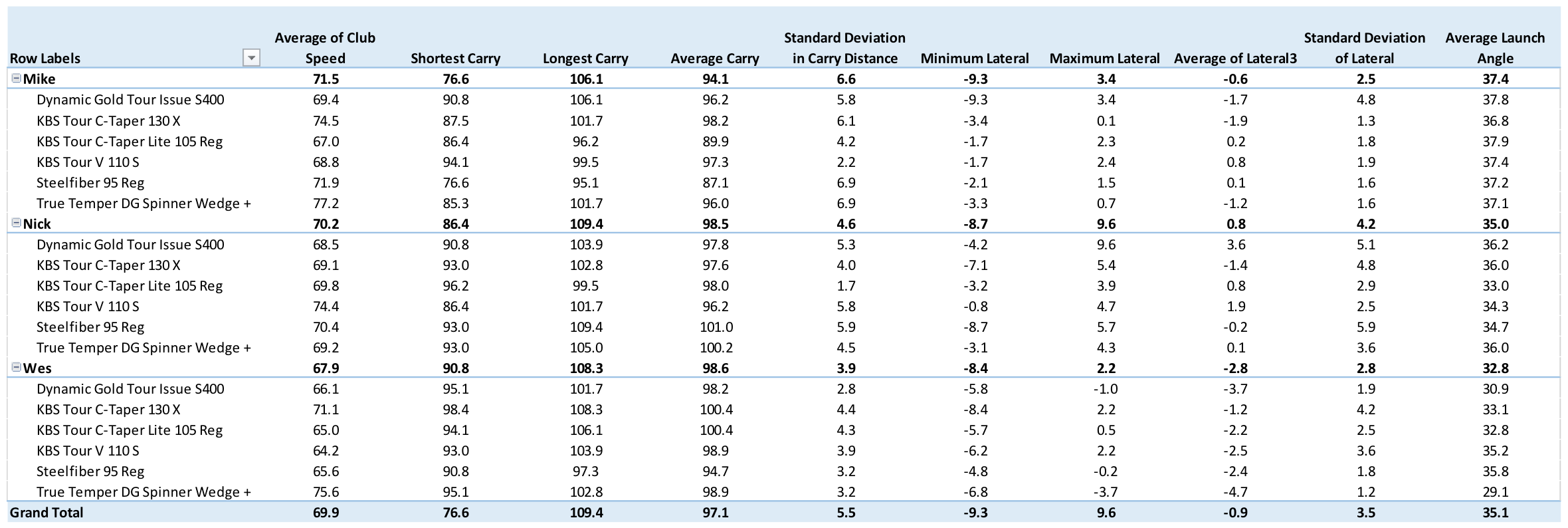
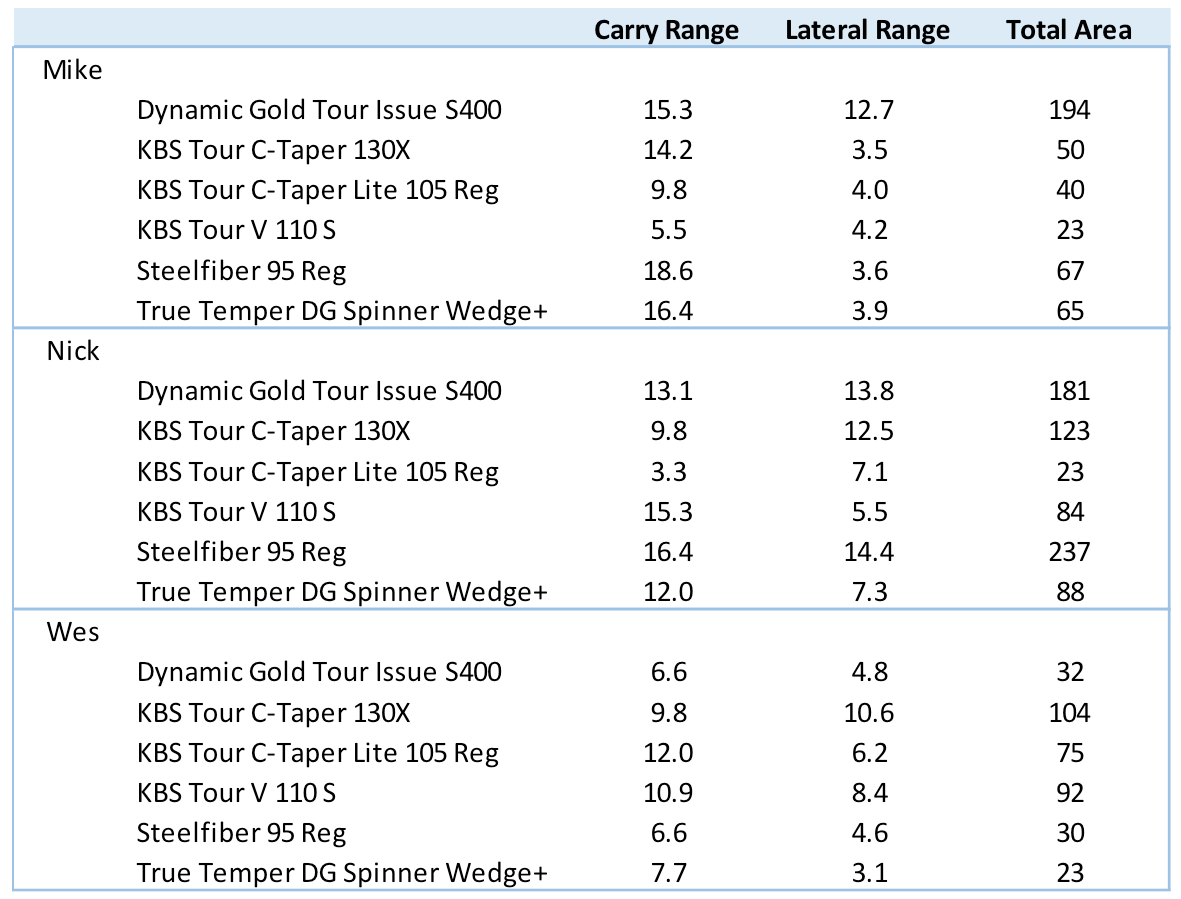
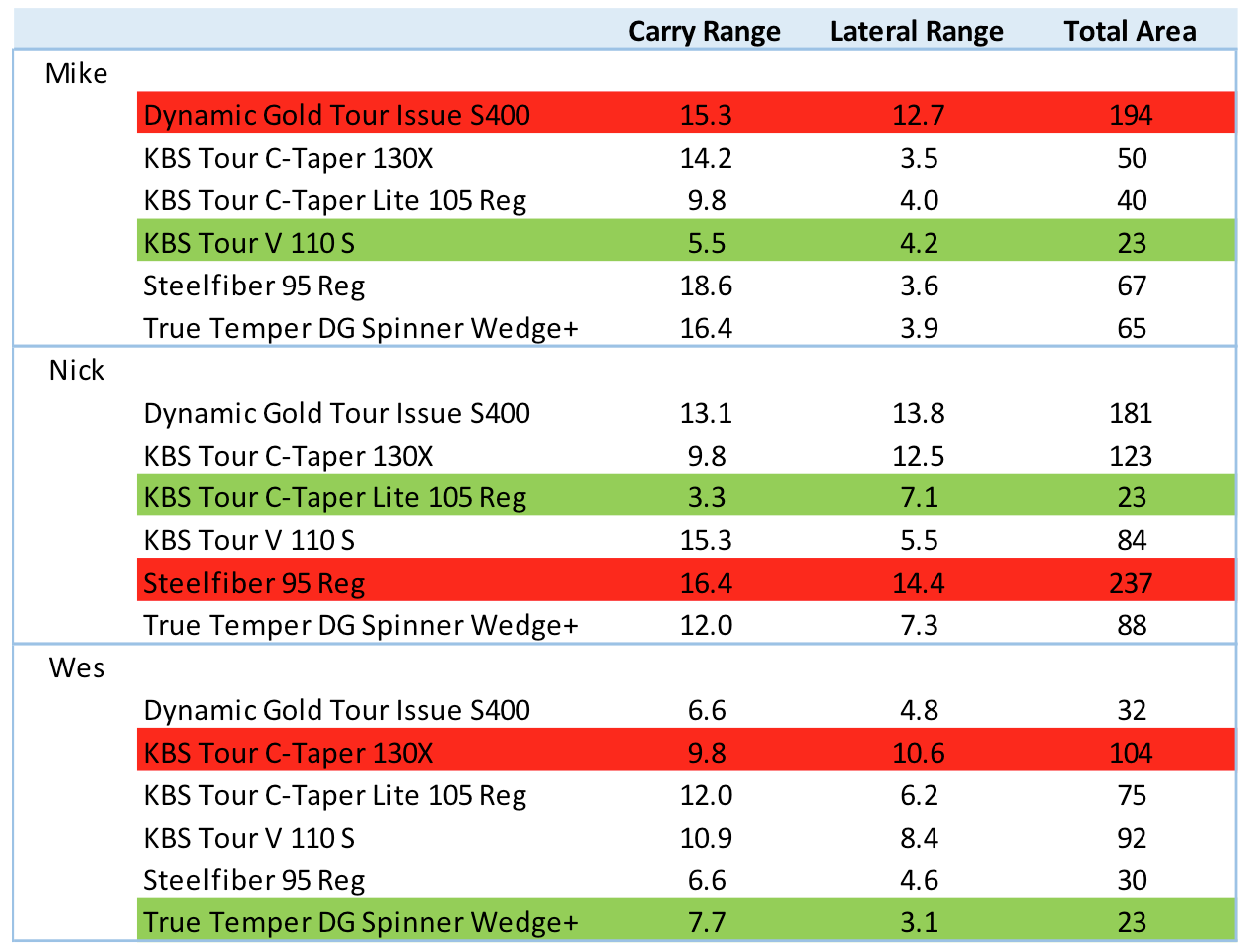






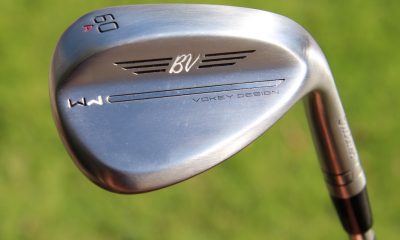

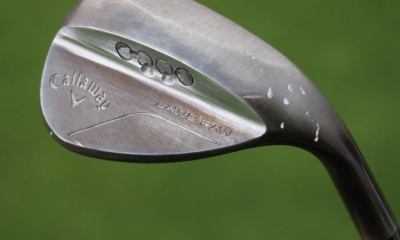





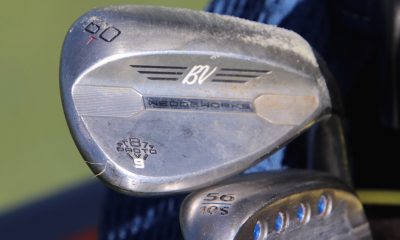













Steve Lack
Aug 28, 2016 at 11:25 am
Softer tips must be why some golfers tip trim their wedge shafts to 8 iron specs?
Ezra
Aug 21, 2016 at 4:35 pm
Absolute BS from a fitter trying to sell his services.
Steve S
Aug 31, 2016 at 1:53 pm
Agreed. Most of the articles I see on fitting are BS. Especially on drivers. Anyone schooled in physics and dynamics laughs at most of the articles. The reality is you want a shaft and grip that is as light and stiff as possible because any weight that is not in the club head does nothing to contribute to the force and momentum of the swing. By doing that then it’s a simple determination on loft of the club face and speed to determine maximum distance for you. This assumes that you have a reasonably decent swing arc and impact position. If not, you should work on that before worrying about “getting fit”.
John
May 27, 2020 at 3:46 pm
The dumbest comment ive ever read on any golf related subject, ever..
Clearly, You are an utterly clueless mental midget
Steve S
Aug 31, 2016 at 2:45 pm
Agreed. Most fitting advice is BS. All these guys try to make this complicated. Without a decent repeatable swing arc all “fitting” does is TRY to compensate for your mistakes which never works in the long run….
tlmck
Aug 19, 2016 at 3:06 pm
Same shafts as my irons and low bounce since the 1980’s has always worked well for me.
Benny
Aug 19, 2016 at 6:53 am
Great article even though I wasn’t able to understand all the data. I feel I am a better wedge player than most and know through trial and error what works well. S400 shafts my buddy had which he added weights too, were way to delayed so my shots went right while whippy wedge shafts or too light pull and hook. But how does the “bounce” play into this data? For instance I have always hit higher bounce heads much longer than low bounce. Regardless of the shaft. Should this be a factor when getting wedges fit and wouldn’t the bounce also cause different dispersion and accuracey?
baudi
Aug 18, 2016 at 9:25 am
Nice test and great article.
To me it simply proves that a good player should find his right wedge shaft.
Although I wouldn’t go as far stating lighter is better. (A softer shaft than in irons is definitely better. Tom Wishon did a great test on this one)
Point here is that a wedge being a utility club is used on partial shots most of the time. That implies a slower rhythm. A slightly heavier but softer shaft will create a lively feel in the swing.
Christian
Aug 17, 2016 at 10:39 pm
I have tried lighter shafts in wedges and initially they work well, especially during testing. After a while I start to get more misshits, a jerky/handsy action and even skulled shots. Back to S400s now, the most stable option for me. I game 130+ gram X in irons
Scott
Aug 24, 2016 at 9:34 am
I had the exact same results after moving to lighter shafts. Worked great until it didn’t. I get more feel with the heavier shaft.
Chris Wycoff
Aug 17, 2016 at 10:33 pm
Thanks for all the great comments and feedback – happy to answer any questions anyone might have!
jason c geraci
Aug 25, 2016 at 9:07 am
Why didn’t you test shafts that are specifically designed for wedges?
Chris Wycoff
Aug 17, 2016 at 10:30 pm
It’s not a specific wedge shaft, but we used in testing due to it’s flex profile. It it fits you, it’s a great shaft option.
Brian T
Aug 17, 2016 at 10:12 pm
Why not include the s200 as it is comes in pretty much every wedge out there? At least a baseline of sorts, or give us an idea of where it stacks up against the others.
Chris Wycoff
Aug 17, 2016 at 10:27 pm
Hi Brian –
That’s a good point, we used the S400 as it’s very close to the S200, only 3 grams heavier.
Matt
Aug 17, 2016 at 8:01 pm
I’m all messed up X100 in irons KBS Tour X in wedges.
Chris Wycoff
Aug 17, 2016 at 10:30 pm
Whatever works for you!
NS Pro
Aug 17, 2016 at 6:04 pm
Why were no Modus3 wedge shafts included in this fitting?
Chris Wycoff
Aug 17, 2016 at 10:07 pm
There was no reason it was intentionally excluded, we just had to pick a reasonable number of shafts with varying weights, flexes and profiles to show the variations. Love the Modus shafts, they very well may be the best shafts for you.
jf
Aug 17, 2016 at 5:53 pm
“Any findings will only be amplified for higher-handicap golfers due to increased swing variability, and any shaft-to-shaft variations might have been hidden by this inconsistency.”
So shaft fitting for wedges is of little benefit to most hackers?
Chris Wycoff
Aug 17, 2016 at 10:09 pm
Hi JF – thanks for reading, it actually means that wedge fittings are even more important for “most hackers’. Better players are better equipped to deal with a shaft that isn’t fit for their swing. Hackers need all the help they can get!
Larry
Aug 17, 2016 at 2:39 pm
I’m using reg flex KBS Tour 90 shafts in my irons. So the recommendation for my wedges is to soft step the same shafts to get lighter & more flexible. Correct?
Chris Wycoff
Aug 17, 2016 at 10:11 pm
Larry – the real recommendation is to find a fitter that allows you to test multiple options and find the best possible shaft. If that’s not possible, it’s very likely soft stepping your same shafts would produce better results than a stock wedge shaft.
DB
Aug 17, 2016 at 2:12 pm
What do you mean by this? You don’t like a lot of wedge or putter designs? Or they have the least tech?
“For most, wedges are in an unfortunate race with the putter to win the unceremonious award of the clubs that help golfers the least.”
explainer
Aug 17, 2016 at 3:17 pm
He means essentially “amateur/high-cap golfers just pick their wedges and putter willy nilly at a detriment to their score”
Chris Wycoff
Aug 17, 2016 at 10:47 pm
DB – unfortunately explainer is correct. Few golfers are fit for wedges and putters even though they are used for over half the shots in a round. The wedges and putter in most bags are working against the golfer, instead of for them.
T-Bone
Aug 17, 2016 at 1:56 pm
Chris, How does a shaft create more spin than another?
Chris Wycoff
Aug 17, 2016 at 10:12 pm
T-Bone –
Thanks for reading. Different shafts have different flex profiles that produce varying flight characteristics. For many, a soft tip section will produce a higher flight with higher spin.
T-Bone
Aug 18, 2016 at 12:16 am
OK, thanks. How many more RPM’s of spin could an average swing speed player expect when switching to a soft tip shaft?
Chris Wycoff
Aug 18, 2016 at 9:29 am
It’s really impossible to say. There are so many variables in the swing and how they interact with the shaft is what matters. It’s best to really find somewhere to try some options and find out for yourself.
Tyler Brown
Aug 17, 2016 at 1:10 pm
Why were wedge specific shafts like KBS 610 and Hi Rev not tested?
Chris Wycoff
Aug 17, 2016 at 10:32 pm
Hi Tyler –
If I were trying to make general recommendations on specific shafts, I definitely would have included them. The intent of this article was to simply illustrate how much variance there is between different shafts for different golfers. In an actual fitting, I do typically include those for testing.
GMR
Aug 17, 2016 at 1:09 pm
How often do these guys hit 100yd 56* wedge shots on the course? Personally I find that to be a relatively challenging scoring shot because the length of swing necessary and amount of spin generated (can get ball caught up in wind, spon back 15 feet on green, etc) and would normally opt to hit a 1/2 52* shot instead, which comes in lower and still stops dead. Would be curious to see these numbers again for testers hitting controlled half shots (e.g. 56* to 85-90) as I suspect the variation in swings and shaft performance may not be so substantial…
Chris Wycoff
Aug 17, 2016 at 10:17 pm
GMR –
Great question, these guys tend to hit that shot pretty frequently. We’ve found in fittings that the trend of using a lighter, softer shaft is actually amplified on half swing. The hypothesis is that these lighter, softer shafts still flex on easier swings and provide feel and feedback that is consistent with a full iron shot. For most, using an overly stiff shaft for these touch shots reduces feedback and consistency. Of course, there is not rule that applies for every golfer so it’s best to test for yourself if possible.
Uncle Buck
Aug 17, 2016 at 12:54 pm
Bravo!
Craig
Aug 17, 2016 at 12:18 pm
Great article, been looking for a good wedge shaft and this hits the bullseye. Thanks Chris.
Chris Wycoff
Aug 17, 2016 at 10:17 pm
Thank you!
Ryan
Aug 17, 2016 at 11:49 am
Is there a reason you tested the shafts with a full to 3/4 wedge shot?
Does the consistency with a specific shaft in your results continue with chips and pitches?
desmond
Aug 17, 2016 at 11:28 am
Typically, wedge shafts are slightly heavier but more flexible than your iron shafts… hmmm.
desmond
Aug 17, 2016 at 11:34 am
But maybe it says that faster speed players with heavy irons shafts do not need heavy wedge shafts. And that makes sense in terms of one is not typically going full bore with a high lofted wedge.
I can’t see a guy with 80g graphite shafts go to 75g graphite or steel in wedges. I see that guy (me) going from 85g graphite in R flex to 105g steel in R for greater precision, still keeping the shaft flex the same as irons. A golfer with stiff flex may want to go down slightly in flex.
Chris Wycoff
Aug 17, 2016 at 10:18 pm
Desmond – you may really want to try a lighter shaft in your wedges if possible. You might be pleasantly surprised.
desmond
Aug 18, 2016 at 4:21 am
Chris – I was fit for a KBS Hi Rev by an Edel fitter at 115g. My new Edel is fit with 110g Nippon Pro Modus Wedge 105. I think you’ll be surprised that if you get too light, you lose control, not to mention the balance of the club is affected. I am a strong wedge player. The lighter graphite iron shafts are for distance and less shock to body.
Chris Wycoff
Aug 18, 2016 at 9:25 am
Getting fit is the best answer – that’s why I was pretty careful to indicate these were trends, not solutions. Every player is different and what works for some definitely will not work for others. I’m glad you found the shafts that work the best for you!
AllBOdoesisgolf
Aug 17, 2016 at 11:06 am
great article but I wouldn’t say their swings are consistent… maybe, after seeing the results, that’s why you used the qualifier of “relatively”. When you have 6mph difference from top to bottom is speed there are going to be different results.
then again, we are not robots… it just surprised me that guys with low single digit handicaps can have such a large discrepancy of swing speeds.
Leon
Aug 17, 2016 at 11:05 am
Or another thumb of rule: use one less flex shafts (the same model) of your irons for your wedges. For example, if you have DG S300 for the irons, consider to put the DG S200 or soft step the S300 once or twice for the wedges. In this way, the clubs will have the same feel and swing characteristics, and there will no transition gap between the irons and wedges.
Lee
Aug 17, 2016 at 2:27 pm
Agreed, I know one of Europe’s top fitter and this is exactly what he and many others are doing.
Chris Wycoff
Aug 17, 2016 at 10:44 pm
While it’s best to try multiple shafts and get fully fit, if that’s not possible, your rule of thumb is likely much better than a stock “Wedge” shaft.
kyle
Aug 17, 2016 at 10:23 am
Agreed, terrific article. Thanks
J
Aug 17, 2016 at 10:05 am
Seriously great article, well done!
DaveMac
Aug 17, 2016 at 2:44 pm
A big thumbs up from me, nice to see a data driven equipment performance article for a change. Really interesting conclusions.